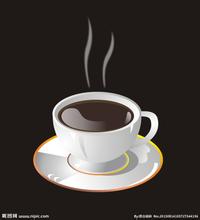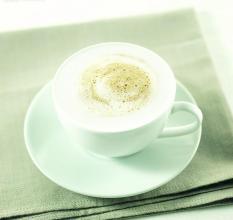Introduction to the treatment of coffee beans there are several treatment methods for mechanically semi-washed coffee beans
Mechanical semi-washing-economical and affordable
Not all producing areas can use the Brazilian half-sun method. If the producing area with heavy moisture is allowed to take out the pectin pods and expose them outdoors, it is not only not easy to be dehydrated and hard, but also easy to parasitize molds. Therefore, mechanical semi-washing has been developed in areas with heavy humidity, which saves both labor and water.
First of all, the red fruit and half-green and half-red fruit sunk into the sink into the pulp sieving machine to remove the full pectin, and there is no need to take it to the sun, let alone pour it into the sink to ferment, but directly into the nearby pectin scraper (Demucilager) with a small amount of water, which can mechanically scrape off the sticky pectin shavings, take out the smooth pods, and expose them outdoors until the water content is reduced to 12%.
In addition, there are in vivo fermentation methods, such as Kopi Luwak raw beans are fermented and shelled in civets. Others, such as shit coffee, monkey coffee and so on, are the most skilled of all ways to pick up beans, and the quality of coffee can be ensured through multiple screening procedures. First move the red fruit and half-green and half-red fruit that have sunk into the sink into a large or medium-sized pulp screening machine (PulpingMachines). It is cleverly designed to mechanically press the fruit into a sieve hole, which is exactly the size of the pod (both sheepskin-wrapped coffee beans) to filter out the flesh outside the pod-using unripe fruit to be harder. Pods are not easy to squeeze out, but mature fruits are soft, and pods are easily squeezed out to ward off unripe beans and filter out the sweetest pods, so the setting of machine thrust is very important. too much force will squeeze out hard and astringent unripe beans, damaging the quality of fine beans. The general push force is set to allow 3% of red fruit pods to be squeezed into the sieve hole to ensure that all stiff green fruits are removed.
After taking out the sticky pods of the red fruit, move them into a large sink, followed by the most important washing and fermentation to remove pectin shavings from the pods. This sticky material is not easy to wash away with water, so it is necessary to hydrolyze the pectin with all kinds of bacteria in the tank, decompose the pectin and wash the pods in the tank to accelerate the pectin to break away from the pods. The fermentation process takes about 16 to 36 hours, depending on temperature and humidity, when malic acid is naturally produced in the tank. Citric acid. Acetic acid. Lactic acid and propionic acid. Interestingly, the raw bean itself contains almost no acetic acid, but the fermentation process of washing treatment can increase the acetic acid concentration of the bean, which is beneficial to the flavor of coffee. Not only can these acids inhibit mold parasitism, some acid elves will also be mixed into beans (which is why washed beans taste so sour), but samples must be taken at any time to see if the sticky pectin on the pods is clean, and then decide whether to stop fermentation and take out clean pods. Once it lasts more than 36 minutes, it may ferment too much, producing too many fatty acids and butynic acid and giving off a bad smell. Moreover, beans mixed with too much acid will make coffee too sour and Chongqing is a bad bean!

Important Notice :
前街咖啡 FrontStreet Coffee has moved to new addredd:
FrontStreet Coffee Address: 315,Donghua East Road,GuangZhou
Tel:020 38364473
- Prev

Introduction to the treatment of coffee beans there are several ways to treat coffee beans. What should be used for different coffee?
Honey treatment is used in almost all the producing areas of Costa Rica. This method is also widely spread throughout Central America. Because the surface mucosa of coffee beans is extremely sticky and smooth and the sugar content is extremely high, it is often called honey. In the process of honey treatment, coffee will leave some or all of the honey when it is dried. After the coffee fruit is picked, graded and peeled, it is dried.
- Next

It is better to use those milk to pull flowers in coffee.
Do not use skim milk with raw materials, because the fat content in skim milk is too low, so the taste of the foam will be much worse than the full-fat steam foam machine or manual milk bubble pot: what is milk foam? Milk foam is the product of a fine mixture of milk and air. The way to make milk foam is to pump air into the milk. The principle is simple, but it really makes a cup of dense and delicate milk.
Related
- What is the meaning of lactic acid fermentation with coffee bean treatment?
- How to judge the state of foam by sound?
- How does the latte pull out the unicorn pattern? Come to get for a little trick to improve the flower pull!
- Will flower pulling affect the taste of the latte?
- Do you know the history of coffee?
- The difference between honey treatment and sun washing what is raisin honey treatment?
- What kind of milk can a novice use to make coffee foam to keep the foam longer? The correct method and skills of milking tutorial sharing
- Why do washed coffee beans taste sour? Flavor characteristics of washed Coffee
- Introduction to the skill of how to practice the size and height of water injection around the circle of hand-brewed coffee
- How do beginners practice coffee flower drawing from scratch?

